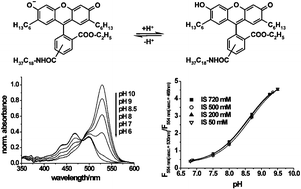pH Fluorosensors for use in marine systems†
Abstract
In this work we present optical pH sensors especially designed for pH measurements in marine environment. Embedded in an uncharged, highly

* Corresponding authors
a University of Regensburg, Institute of Analytical Chemistry, Chemo- and Biosensors, 93040 Regensburg, Germany
b
University of Technology of Graz, Institute of Analytical Chemistry, Micro- and Radiochemistry, 8010 Graz, Austria
E-mail:
klimant@analytchem.tu-graz.ac.at
In this work we present optical pH sensors especially designed for pH measurements in marine environment. Embedded in an uncharged, highly

 Please wait while we load your content...
Something went wrong. Try again?
Please wait while we load your content...
Something went wrong. Try again?
C. R. Schröder, B. M. Weidgans and I. Klimant, Analyst, 2005, 130, 907 DOI: 10.1039/B501306B
To request permission to reproduce material from this article, please go to the Copyright Clearance Center request page.
If you are an author contributing to an RSC publication, you do not need to request permission provided correct acknowledgement is given.
If you are the author of this article, you do not need to request permission to reproduce figures and diagrams provided correct acknowledgement is given. If you want to reproduce the whole article in a third-party publication (excluding your thesis/dissertation for which permission is not required) please go to the Copyright Clearance Center request page.
Read more about how to correctly acknowledge RSC content.
 Fetching data from CrossRef.
Fetching data from CrossRef.
This may take some time to load.
Loading related content
